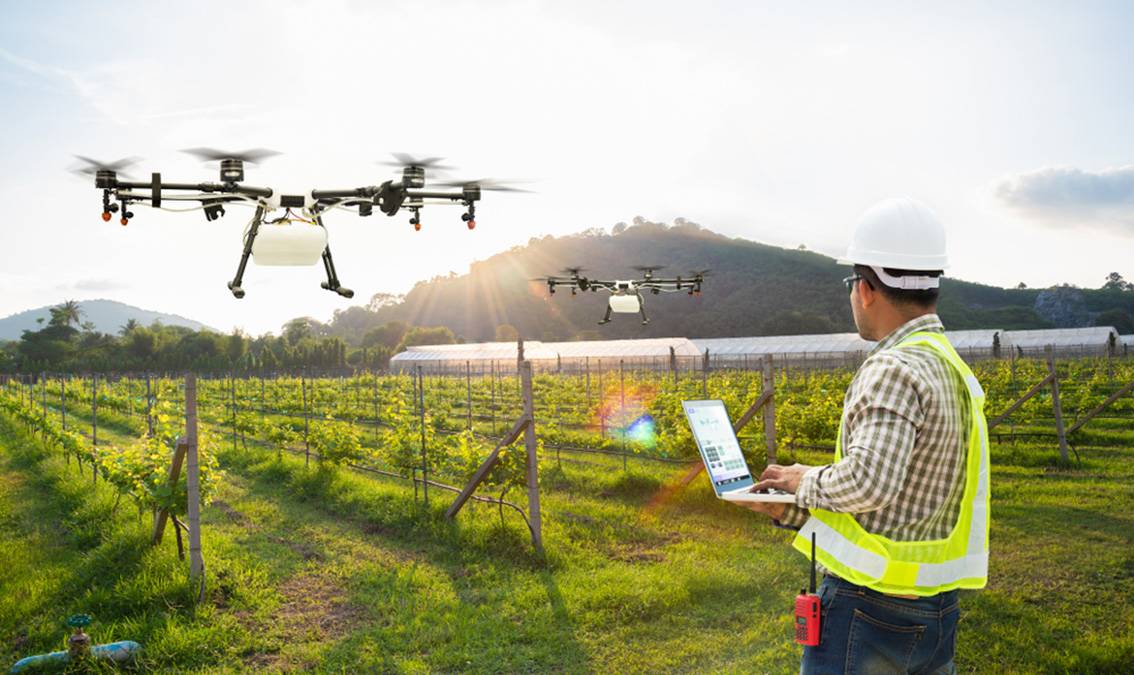With the world supply at an all-time high and commodity prices at an all-time low as a result of increasing demands in food production and consumption, the modern farming industry is at a crossroads. There is a greater need than ever before for farmers and agronomists across the globe to improve resource management in response to tightening budgets, while the “farm to fork” movement has seen rising pressure for enhanced product traceability, as consumers become more interested in the origin of the goods they purchase and how they were grown.
A landmark report published by the Intergovernmental Panel on Climate Change (IPCC) states that sustainable land management could be key to reversing the impact of climate change on land degradation – a significant consequence of human and agricultural activity and extreme weather conditions, in which the quality of land and soil is polluted or degraded. The report claims that this could provide “cost-effective, immediate and long-term benefits”. With this in mind, it is crucial that farms change how they operate to not only mitigate the effects of climate change, but to protect themselves against economic loss.
The Rise of Precision Agriculture
To balance feeding the planet with reducing global emissions, ambitious plans have been put in place. The U.K.’s National Farmers’ Union (NFU), for example, has outlined its goal of making British agriculture carbon neutral by 2040, with the introduction of a range of measures to improve land management, increase farming efficiencies, and boost the wider bioeconomy. Although there is no single answer to the problem, the NFU has advocated working “smarter” to cut direct pollution from farming, by delivering the same value with fewer emissions.
Precision agriculture practices, which can help farmers make better informed decisions, have evolved significantly over recent years, with the global market now estimated to reach $43.4 billion by 2025. While drones, also known as unmanned aerial vehicles (UAVs), have not yet made it into the mainstream agriculture space, they are playing an increasingly important role in precision farming, helping agriculture professionals lead the way with sustainable farming practices, while also protecting and increasing profitability.
The use of global positioning system (GPS) technology, together with geographic information system (GIS) tools, form a large part of these precision agriculture practices allowing fine-scale monitoring and mapping of yield and crop parameter data within fields. These provide more intense and efficient cultivation methods, which can help farmers adjust fertilizer prescriptions or identify crop diseases before they become widespread. With more data at their fingertips, farmers can make decisions based on economic and environmental factors – for example, by optimizing fertilizer treatment and applying only the right amount at the right time, significant cost and environmental savings can be made.
The Adoption of Drones
The use of drones in the agriculture industry is steadily growing as part of an effective approach to sustainable agricultural management that allows agronomists, agricultural engineers, and farmers to help streamline their operations, using robust data analytics to gain effective insights into their crops. Crop monitoring, for example, is made easier by using drone data to accurately plan and make ongoing improvements, such as the use of ditches and evolving fertilizer applications. Products can be accurately traced from farm to fork using GPS locations for every point in the journey, rather than more traditional time and labor-intensive data collection.
UAVs are particularly useful for the careful monitoring of large areas of farmland, considering factors such as slope and elevation, for example, to identify the most suitable seeding prescriptions. The technology has also proven useful in gaining an extensive overview of plant emergence and population, as more accurate data can help with replanting decisions, as well as thinning and pruning activity and the improvement of crop models.
Crucially, the high-resolution nature of drone data can be used to assess the fertility of crops, allowing agricultural professionals to more accurately apply fertilizer, reduce wastage, and plan – and troubleshoot – irrigation systems. The technology can also be particularly effective following natural disasters, such as a flood, to help farmers to assess damage across terrains that may not be readily accessible on foot.
Taking Drones Further
The potential for UAVs in the improvement of sustainable agriculture is huge. Already the agriculture drone market is predicted to be worth US$32.4 billion – an indication that the industry is beginning to recognize the benefits over more traditional methods, such as ground mapping.
Given the extensive terrain that requires surveying, drones offer increased efficiency, allowing users to capture high-resolution imagery more quickly than alternative methods. Particularly in these volatile market conditions, estimating annual yield can help guide decision-making and manage expectations. In addition, UAVs are now seen as a safer option for mapping difficult areas, such as uneven or expansive fields, that can be hazardous for operators – particularly compared to terrestrial techniques, which must be carried out on-foot.
Where satellites and manned aircrafts have traditionally been used to monitor agriculture, UAVs are quickly becoming recognized as a more accurate and cost-effective replacement. Studies have shown that drone imagery provides a higher rate of accuracy and resolution – even on cloudy days. While using traditional terrestrial approaches to collect data in challenging weather conditions could potentially delay projects for days, accurate crop health assessments can be made throughout the year using UAVs.








